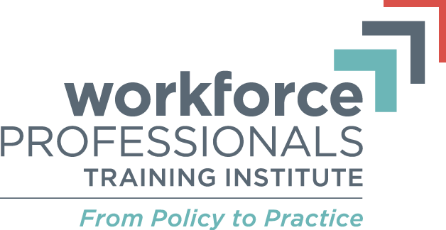
On Thursday, October 27th, Dan Salemson, WPTI’s Managing Director of Digital Learning & Training, appeared as a guest panelist at Nonprofit Staten Island’s 10th Annual Staten Island Nonprofit Conference, 2022 & Beyond: Building Nonprofit Capacity & Resilience.
The conference brought together over 150 Staten Island nonprofit professionals and leaders for a day of education and networking to develop meaningful partnerships, deepen their effectiveness and impact, and further outreach into their communities.
Joining representatives from Wagner College, the College of Staten Island, and JobsFirstNYC, Dan participated in the “Let’s Talk Workforce Development: Recruit & Retain Top Talent” panel. In the wake of COVID and the “Great Resignation,” businesses of all types find themselves in fierce competition to attract and hold on to highly qualified workers; nonprofits, with smaller salary budgets and fewer perks, often struggle to compete.

Among the key insights from the panel:
- Nonprofits make up a substantial part of NYC’s labor market, so recruitment challenges impact the broader economy. 18% of the city’s private sector workers – 662,025 people – are employed by nonprofits. The figure for Staten Island is even higher at 25%, second only to the Bronx.
- Staff vacancies are taking longer to fill at nearly every workforce organization and educational institution, as well as an uptick of new staff leaving jobs within a few months of hire. This includes key positions that are impacting overall capacity and program outcomes. (WPTI works with hundreds of organizations across NYC – including Staten Island mainstays like JCC of Staten Island and AHRC Employment and Business Services in St. George – that help low-income New Yorkers prepare for, obtain and thrive in good paying jobs.)
The panel identified major causes of staff churn in recent years, including:
- Restructuring and concerns about health & safety during COVID.
- Program budgets took a hit as monies were diverted to setting up remote platforms and PPE, leading to downsizing.
- Many nonprofit staff live in the neighborhoods hardest hit by COVID in 2020 and 2021. Dealing with their own losses while simultaneously supporting program clients experiencing trauma led many to reconsider career choices.
- Some who left the field in 2020-2021 have moved on, either to different occupations or retirement.
- Chronic low pay continues to hamper the field.
- WPTI’s Voices from the Frontline initiative and 2020 and 2021 surveys of frontline workforce development professionals have documented that 6-in-10 practitioners in New York City earn less than $55,000 per year, the approximate median salary for the city as a whole. (This is despite the fact that 74 percent of these professionals possess at least a bachelor’s degree, as compared to 44 percent of the broader citywide working-age population.)
- As a result of these low salaries, workforce professionals face serious financial pressures. Only 29 percent of Voices from the Frontline respondents agreed that their salaries were sufficient to cover living expenses, and only 16 percent felt confident that they could cover a month’s worth of expenses in an emergency.
- Salaries for this group have barely risen in the ten years since WPTI’s 2011 study of the same workforce, Deep in the Trenches.
- As demand for skilled workers has intensified across the labor market, nonprofit practitioners are finding a wide range of options open to them. Nonprofit organizations often cannot match private sector salaries.
- Persistent limited opportunities for advancement and glass ceilings.
- Two-thirds of frontline staff in workforce development are women, while nearly three-quarters are people of color. WPTI’s own research has documented that workforce professionals of color are more likely than their White colleagues in the field to earn less than $55,000 annually.
- While many women- and minority-led nonprofits are doing vital work across the city, a 2018 study showed that more than 70 percent of the nearly 400 city nonprofits surveyed had CEOs or Executive Directors who were White, cisgender men.
Within this highly competitive environment, attracting and retaining skilled workers requires a toolbox of approaches. Among the suggestions offered by the panelists:
- Invest in professional development. Employees are more productive and satisfied when a company provides time and resources to increase skills. Make professional development part of each staff member’s measurable tasks for performance reviews. As the old saying goes, “The only thing worse than training your employees and having them leave is not training them and having them stay.”
- Create a culture of outcomes, not process. Ensure each staff member understands the overall achievements of the organization, both within and beyond their own role and department. People choose to work at nonprofits because they have a passion for the mission, but it’s too easy to lose sight of the big picture amidst the day-to-day work.
- Make digital transformation a priority for the organization. Chronic understaffing is more often the rule than the exception among nonprofits. The right digital tools and platforms can automate repetitive and low-value tasks, freeing up staff to focus on their highest-value work – assisting participants.
- Conduct “stay interviews” of current staff. Understanding the factors that keep employees attached to their job and the organization can shape both recruitment and retention practices.
- Build strong recognition and reward systems to ensure that staff feels valued. Provide consistent positive feedback, make a conscious effort to “catch” staff doing the right things, and celebrate successes no matter how small.
- Review job postings for “qualification creep.” Employers often add non-critical degrees or certification requirements to the minimum threshold for applying, thereby excluding otherwise qualified candidates. Adopting a skills / experience approach can expand and diversify the pool of potential candidates.
Interested in learning more? Contact Dan Salemson, WPTI's Managing Director of Digital Learning and Technology, at dsalemson@wpti.org.
